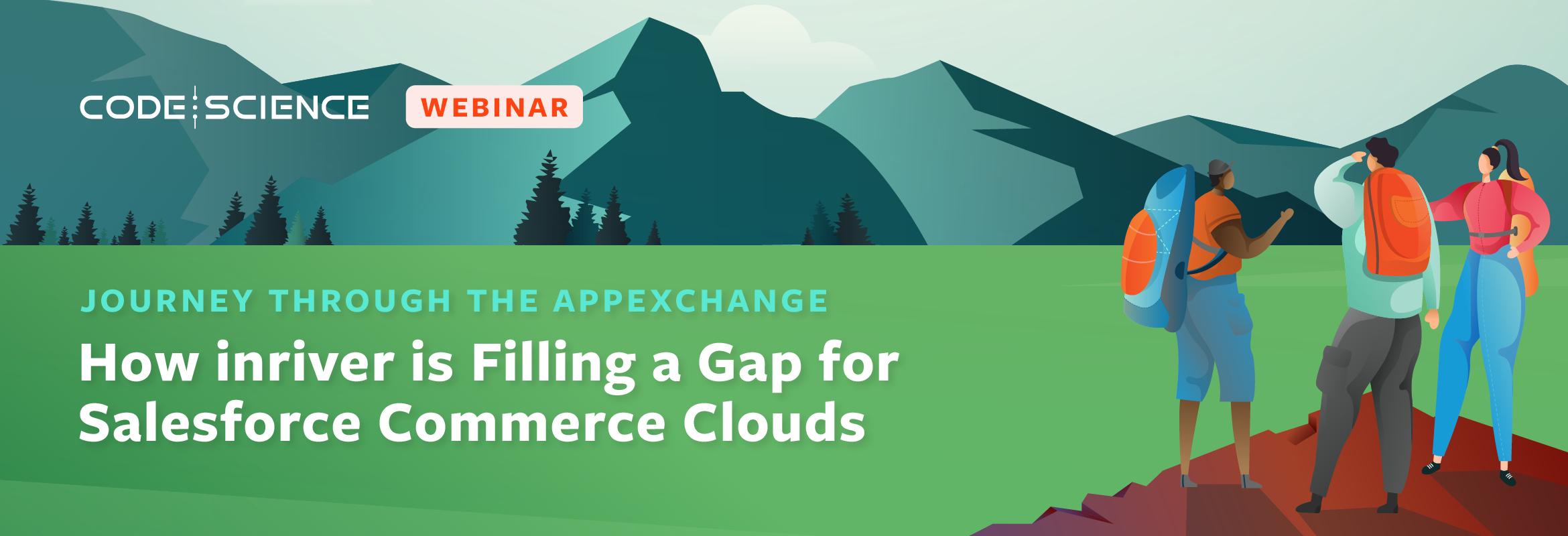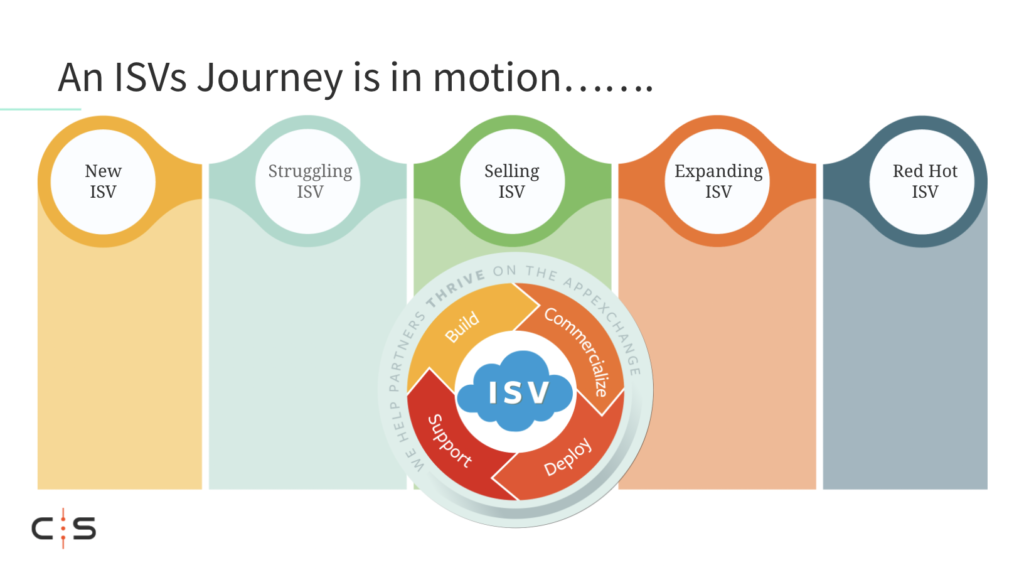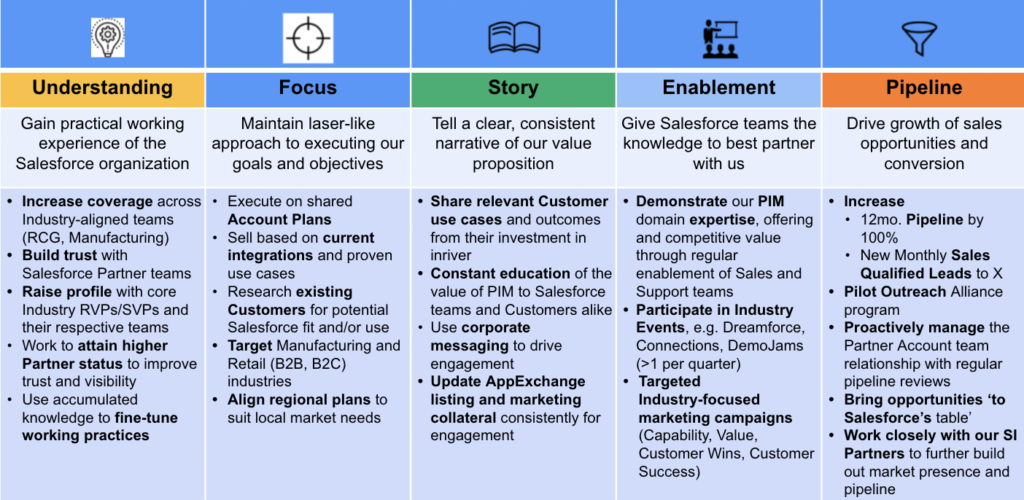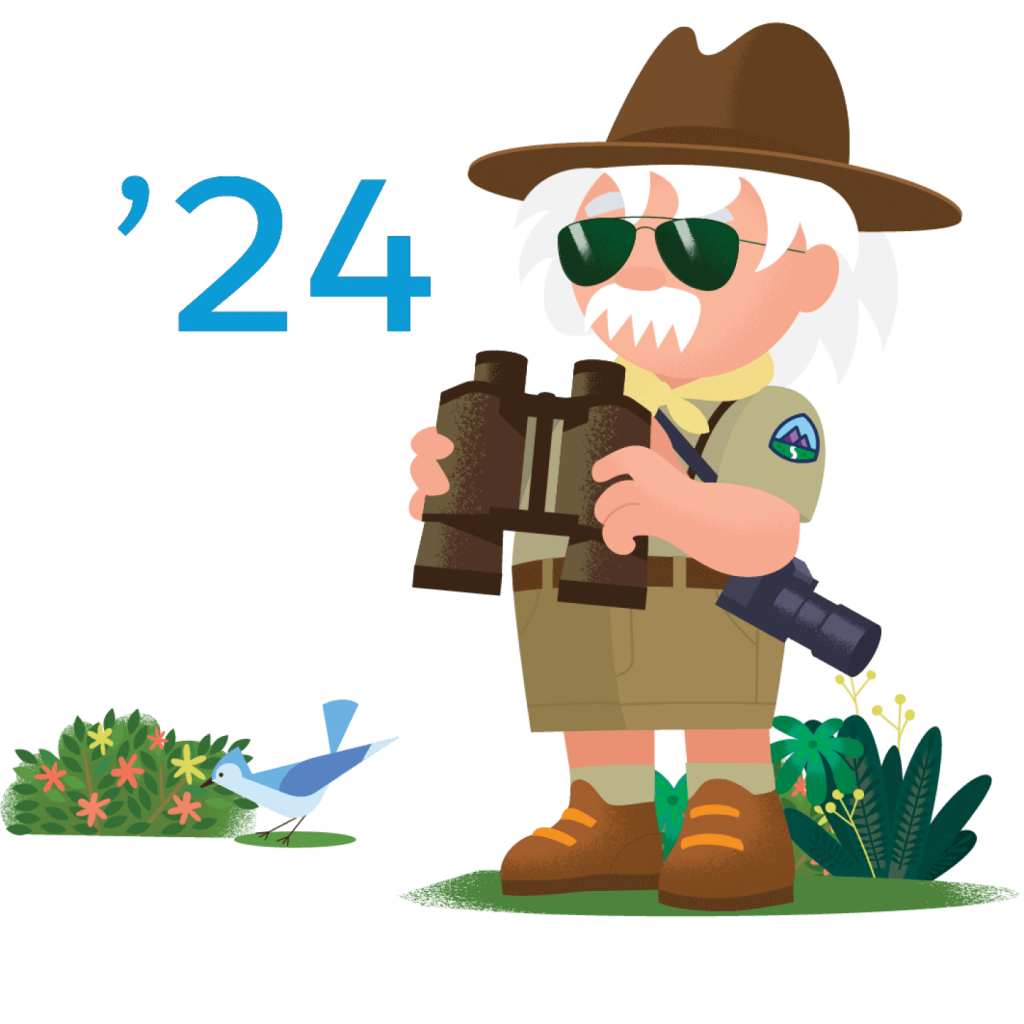
We understand that ISVs who are trying to build a thriving business don’t always want to read a manual on how to be successful. They want to talk to experts who are actually in the arena doing it on a day-to-day basis and learn directly from them. That’s why we started our Journey Through the AppExchange webinar series – to help guide ISVs through the Salesforce ecosystem.
In this third installment of our series, CodeScience Chief Revenue Officer, Sean Hogan, spoke with Gauri Chawla, Vice President, Global Partners and Alliances at inriver, about how inriver is filling a gap for Salesforce Commerce Clouds, the challenges they’ve encountered, and the lessons other ISVs can learn from their experience. Watch the webinar now and read up on a few of the highlights from their chat below.
Finding the Gaps
Gauri and Sean started their discussion by diving into how partnering with Salesforce can help an organization better understand their own potential. When Gauri first started out on the AppExchange, she reached out to her customers who were already in the ecosystem to find out which cloud was the best place to connect with her customer base. Sean remarked that that really resonated with him, along with the idea to “always listen to what your customers are asking for and give it to them.”
Moving forward, Gauri decided to focus on how she could improve her customers’ experience and how inriver could use the partnerships and integrations at Salesforce to their advantage. From a product perspective, she said that her team examined where there were gaps in their product or where they could make their product “much more relevant through partnerships with technology partners. And that’s why Salesforce is, what I call, our main tier one technology partner in that area.”

Increasing the Pipeline
Inriver’s partnership with Salesforce jump started their business and they found that the leads that were sourced by Salesforce and brought to Gauri’s team actually closed at a higher, faster rate than those leads that her sales team found directly. More than that, Gauri stated, “we’ve increased our pipeline from sourced opportunities from Salesforce by 80%.” When they started to see these results, they began looking for ways to make themselves more valuable and relevant to Salesforce in order to keep those metrics in their favor. They built strong relationships on the sales side and focused on succeeding with their current customers and growing from there. Sean agreed with that strategy, saying “starting small and winning is way more important than going too broad, too quickly, too fast. Wins beget more wins.”
They acknowledged that before that success happens, there are still a lot of steps to take. You have to decide on your product marketing message, align your sales, engineering, and marketing teams, map out your buyer’s and seller’s journey, product management, roadmap, and your overall broader strategy. But all of those things combine to drive the desirable KPI outcomes that Gauri mentioned earlier. She also mentioned that “when we work together with Salesforce, it affects our deals in a very positive way, and it actually affects their deals in a positive way because they’ve seen an increase too. But the fact that we can actually close deals 16% faster than our direct team helps when you’re planning within a fiscal year.”

Marketing into Salesforce
Inriver had some more success with customers on a global scale and as their integration in the Salesforce ecosystem grew, they started to see another opportunity for an increased partnership. They built a team to focus entirely on Salesforce and brought in an outside consultant to help them see things from a truly Salesforce perspective. Together, they were able to create a strategic plan to engage in marketing with Salesforce and grow this effort.
Gauri stated, “We built on that. And over time, we’ve now started to create a bigger plan where we enable Salesforce, we market into Salesforce, we market with Salesforce…And now I actually have a full, dedicated global Salesforce Alliance team that is taking this and moving forward.”
They’re still taking the project step-by-step, but thanks to a focused internal team and an external partner with domain expertise, they were able to make this strategy a reality. For others who want to take this leap, her advice was to “market into Salesforce now, but do it with specific messages and bring some value.” Salesforce is working with countless ISVs and your team needs to find a way to stand out in the crowd. When you combine a focused strategy with a specific, consistent message, it will start to resonate in the AppExchange and help you become top of mind.
To hear more from Sean and Gauri and get a copy of the deck, register and watch the webinar here.
Companies build their Salesforce businesses better with CodeScience. It is our mission that no ISV navigates Salesforce alone. If you’re looking for guidance on your product, help supporting your customers, or just need to ask an expert, get in touch today!


